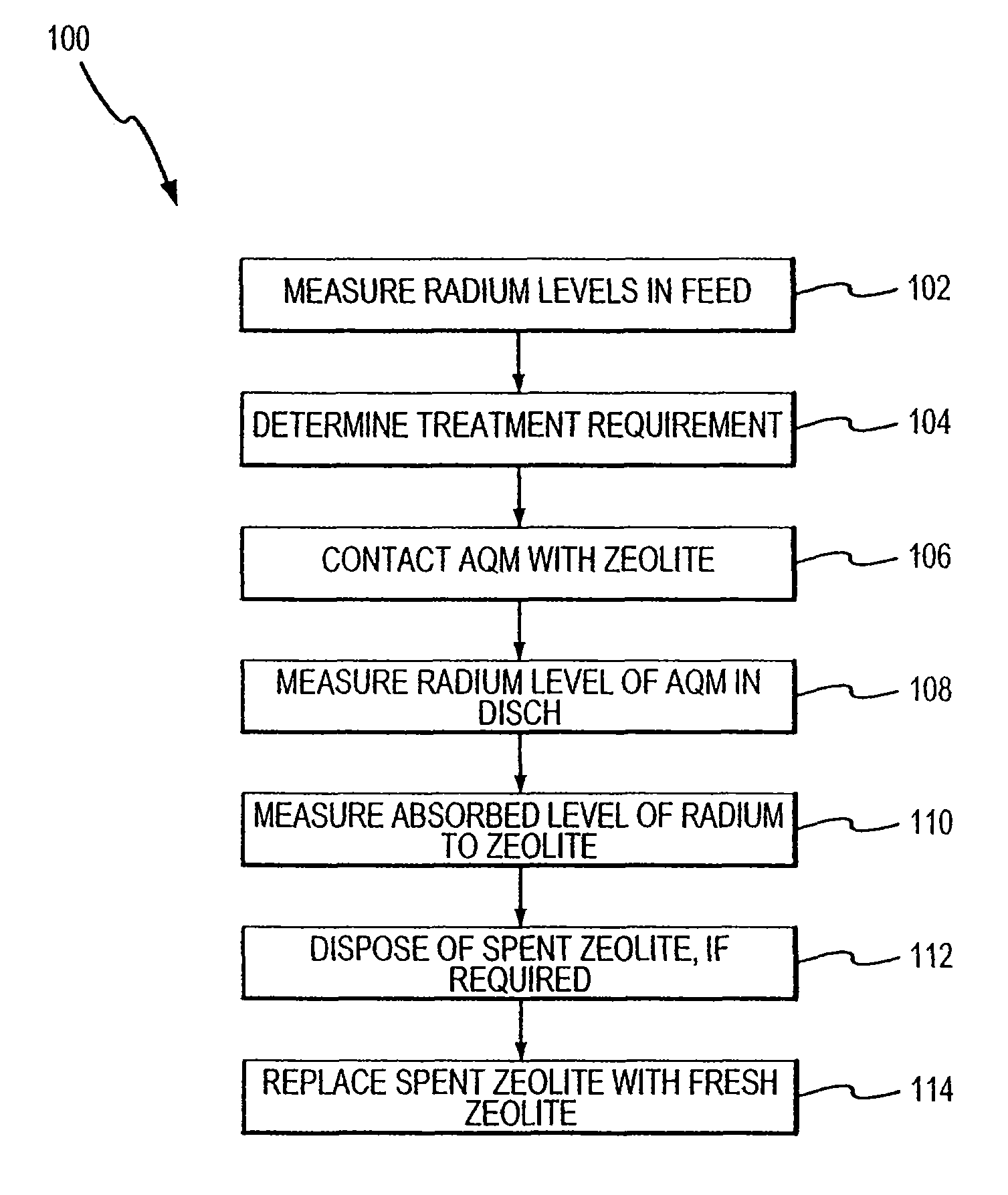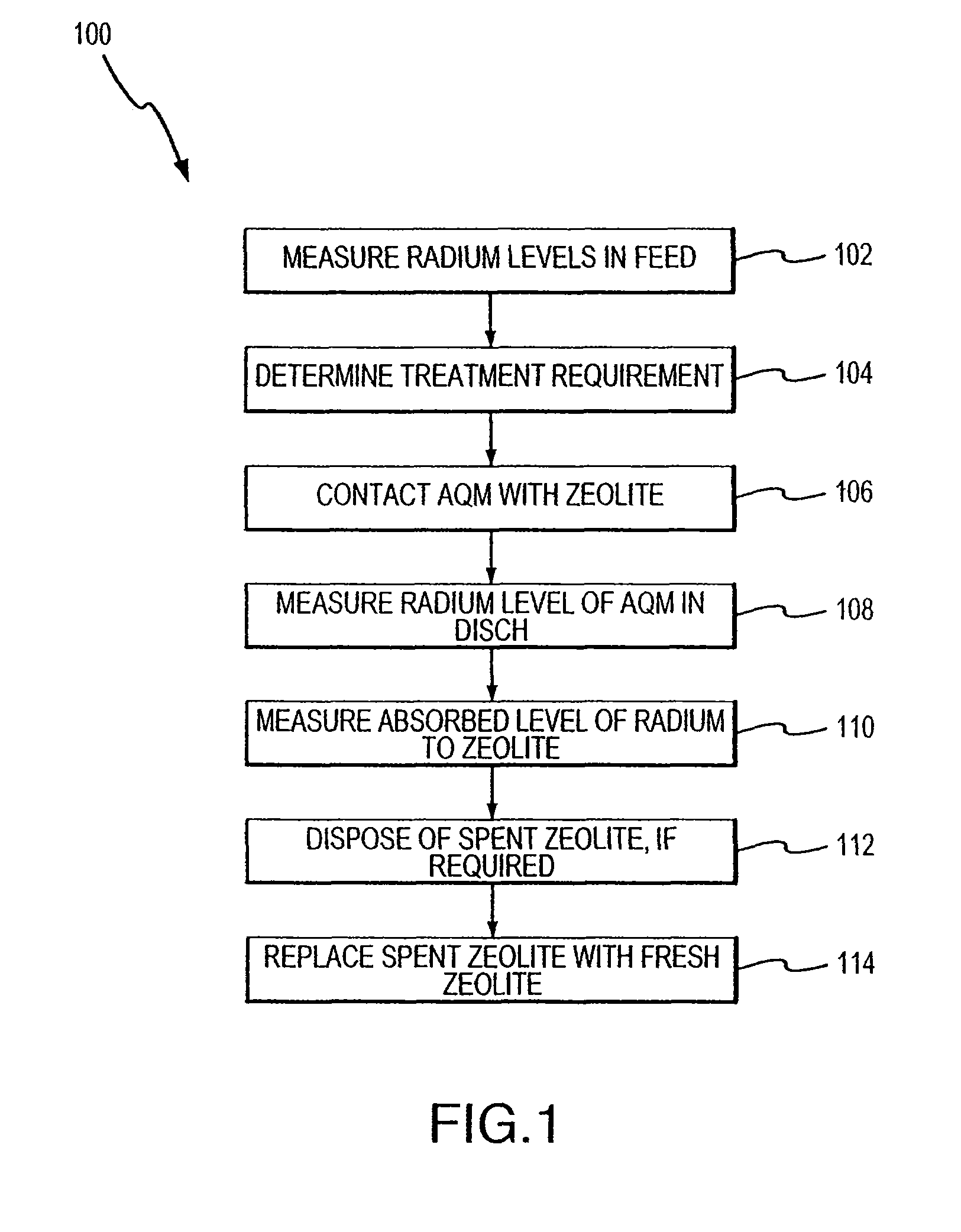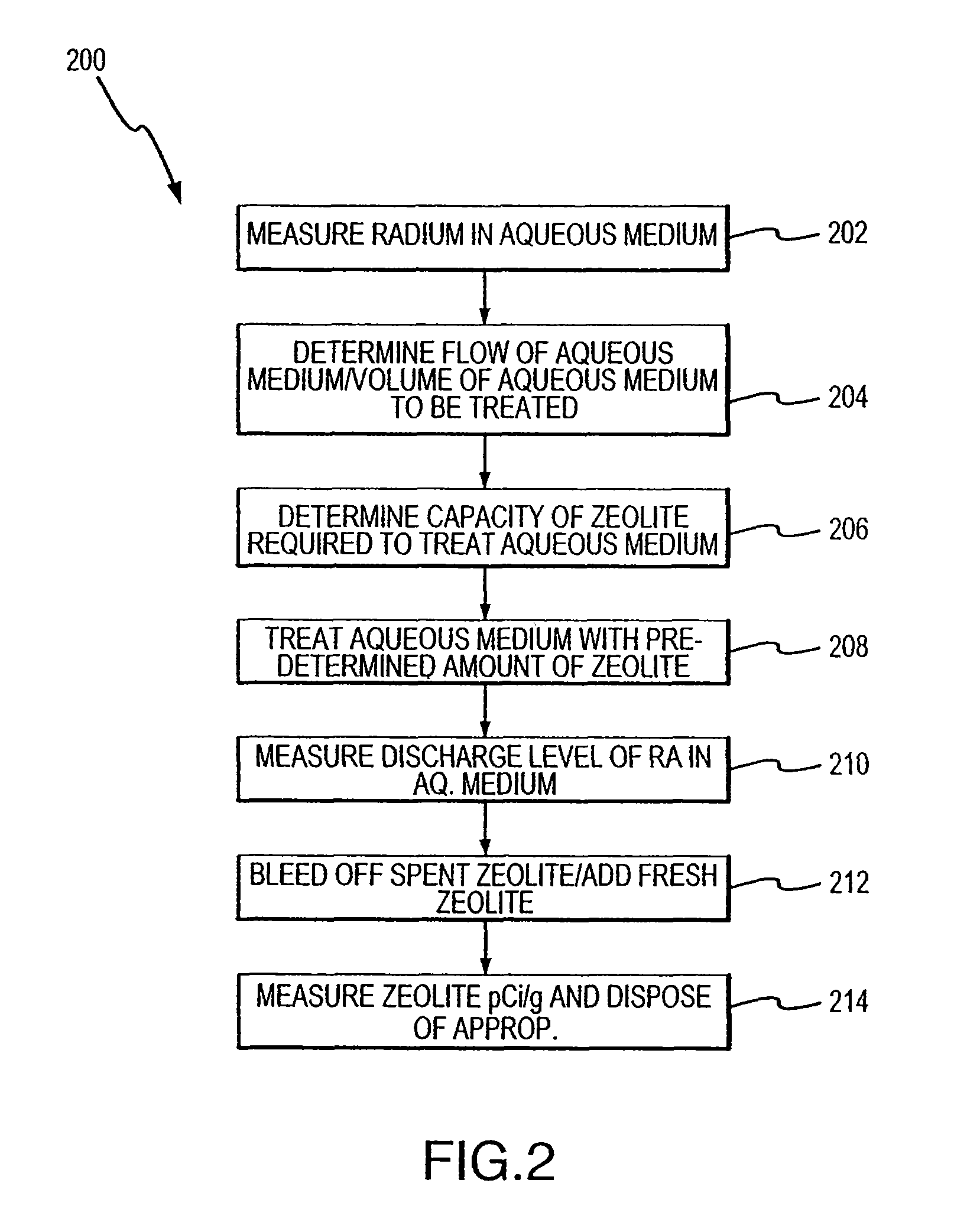Method for removing cationic contaminants from water using natural zeolite underloaded with transition metal ions to limit leakage of intrinsic arsenic therefrom
a technology of transition metal ions and cationic contaminants, which is applied in the direction of water/sewage treatment by ion exchange, separation processes, radioactive contaminants, etc., can solve the problems of limited ability to maximize fresh water use, increased pollution of fresh water supplies, and potential serious health effects on humans, and achieve excellent capacity for radium removal
- Summary
- Abstract
- Description
- Claims
- Application Information
AI Technical Summary
Benefits of technology
Problems solved by technology
Method used
Image
Examples
example 1
[0108]Note that the arsenic assay procedures used throughout the Examples section were performed by the Commercial Testing & Engineering lab (CT&E) at 4665 Paris St., Denver, Colo. Analysis were performed using graphite furnace atomic absorption (GFAA) according to EPA protocol number 7000. Iron, calcium, sodium, etc concentrations were all determine using standard atomic absorption techniques known in the art. These procedures were in accordance with EPA protocol number 6010.
[0109]Also note that the chemically treated zeolites shown in the Examples below were generally prepared according to the following protocol:
[0110]For laboratory scale experiments 500 grams of natural zeolite are placed in a four to eight liter container, and the container filled with water and stirred with a mechanical mixer for approximately thirty minutes. The zeolite was allowed to settle and the water (generally containing suspended clays and fines) decanted. Water was added to the settled solids, remixed,...
example 2
Ferric Sulfate Stabilized Natural Zeolite does not Leach Arsenic Compounds
[0118]Results of NSF Std 61 tests on raw and iron-modified zeolites. The iron modified zeolites had contact with a maximum of 0.1 meq ferrous iron / gram.
[0119]
Raw ResultsTreated ResultsZeolite Sourceμg / L Asμg / L AsKMI7.7, 19Ash Meadows1.1, Bitter Creek1.8, 2.4
example 3
Other Metal Ions Load Effectively onto Zeolite
[0120]Preparation of loaded-zeolite materials was as described previously (above), except, that 50 grams of zeolite was contacted overnight in a beaker having water solutions as shown in Table 2. Each solution was mechanically stirred for a period of from 1 to 16 hours.
[0121]
TABLE 2Arsenic Absorption Using Aluminum, Calcium, FerricAnd Ferrous-Loaded ZeolitesPurpose:Evaluate Al, Ca, Fe++, and Fe+++ forms of zeolite forarsenic removal from waterProcedure:Contact 50 gram portions of zeolite overnight in watersolutions of the above to convert them to the respectiveforms. Add 2 meq / gram1Use11.1 grams Al2(SO4)3•18H2Oin 500 ml water2Use11.8 grams CaNO3•4H20in 500 ml water3Use13.9 grams FeSO4•7H2Oin 500 ml water4Use 9.4 grams Fe2(SO4)3•xH2Oin 500 ml waterSieve solutions to recover zeolite and rinse zeolite with water. Discardsolutions.Contact each zeolite aliquot overnight with 3 liters demineralizedwater containing100 ppb arsenic as sodium arse...
PUM
| Property | Measurement | Unit |
|---|---|---|
| atomic number | aaaaa | aaaaa |
| temperature | aaaaa | aaaaa |
| temperature | aaaaa | aaaaa |
Abstract
Description
Claims
Application Information
 Login to View More
Login to View More - R&D
- Intellectual Property
- Life Sciences
- Materials
- Tech Scout
- Unparalleled Data Quality
- Higher Quality Content
- 60% Fewer Hallucinations
Browse by: Latest US Patents, China's latest patents, Technical Efficacy Thesaurus, Application Domain, Technology Topic, Popular Technical Reports.
© 2025 PatSnap. All rights reserved.Legal|Privacy policy|Modern Slavery Act Transparency Statement|Sitemap|About US| Contact US: help@patsnap.com



